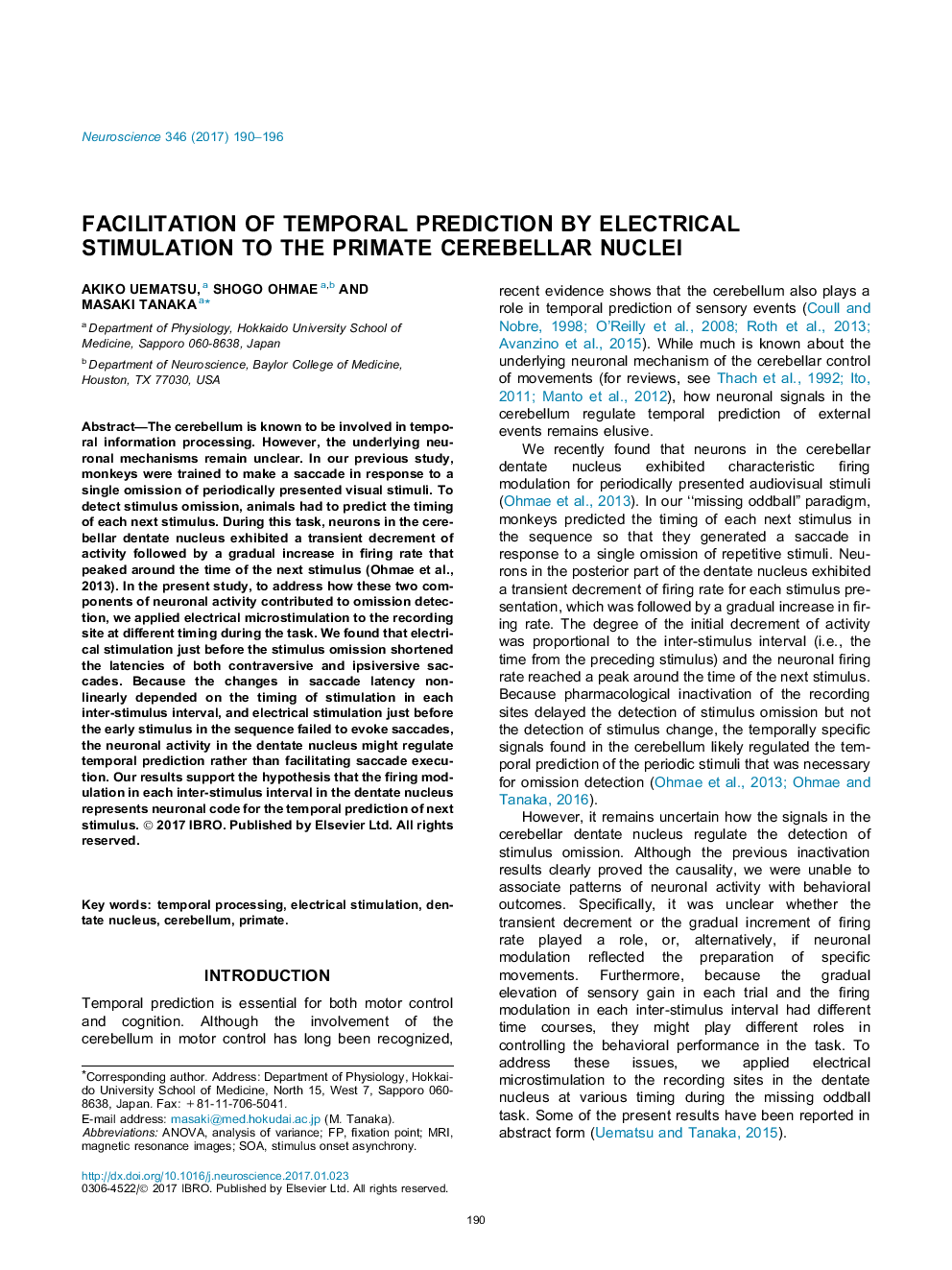| کد مقاله | کد نشریه | سال انتشار | مقاله انگلیسی | نسخه تمام متن |
|---|---|---|---|---|
| 5737976 | 1614730 | 2017 | 7 صفحه PDF | دانلود رایگان |
- Monkeys were trained to make a saccade in response to single omission of periodic visual stimuli.
- Electrical stimulation to the cerebellar dentate nucleus promoted omission detection irrespective of saccade direction.
- The magnitude of facilitation depended on the timing of electrical stimulation.
- Signals in the cerebellum may represent temporal prediction of each next stimulus in the sequence.
The cerebellum is known to be involved in temporal information processing. However, the underlying neuronal mechanisms remain unclear. In our previous study, monkeys were trained to make a saccade in response to a single omission of periodically presented visual stimuli. To detect stimulus omission, animals had to predict the timing of each next stimulus. During this task, neurons in the cerebellar dentate nucleus exhibited a transient decrement of activity followed by a gradual increase in firing rate that peaked around the time of the next stimulus (Ohmae et al., 2013). In the present study, to address how these two components of neuronal activity contributed to omission detection, we applied electrical microstimulation to the recording site at different timing during the task. We found that electrical stimulation just before the stimulus omission shortened the latencies of both contraversive and ipsiversive saccades. Because the changes in saccade latency non-linearly depended on the timing of stimulation in each inter-stimulus interval, and electrical stimulation just before the early stimulus in the sequence failed to evoke saccades, the neuronal activity in the dentate nucleus might regulate temporal prediction rather than facilitating saccade execution. Our results support the hypothesis that the firing modulation in each inter-stimulus interval in the dentate nucleus represents neuronal code for the temporal prediction of next stimulus.
Journal: Neuroscience - Volume 346, 27 March 2017, Pages 190-196
